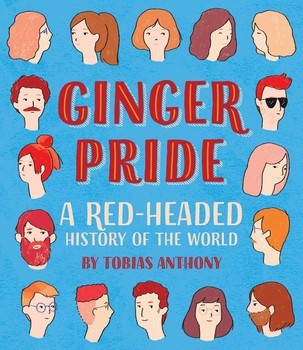
LONG derided for the colour of their hair, redheads are now proving it pays to be different.
Despite just 2% of the world’s population having crimson locks, they are over-represented in high-profile public roles.
But it might be too soon for them to have the last laugh, as it’s feared the redhead gene could die out by 2060.
A new book, Ginger Pride – A Red-Headed History Of The World, examines what makes red hair so special – and confirms they really are a unique breed.
“It started off as a look at historical figures with red hair, as I noticed there was a bit of a trend,” explained author and “proud ginger” Tobias Anthony.
“But I decided to widen it to look at other topics.
“One aspect I was really intrigued by was the myth-making, like accusations of being vampires and witches centuries ago.
“Redheads play a hand in almost every aspect of the world as we know it, from Vikings to royalty (by the time Queen Elizabeth I passed, Britain had seen 138 consecutive years of redheads on the throne) to medicine.
“I think once you have this type of myth and aura connected to ginger hair, there’s some attraction to it. There is something that makes you stand out and seems to captivate people in a certain way and it makes sense to want to ride on the coat-tails of that.”
To that end, there are famous redheads who weren’t naturally red, stars like Lucille Ball, Oscar nominee Amy Adams and Mad Men star Christina Hendricks. In America, red hair dye sells more than any other, generating $200m in sales per year.

But those bottle reds won’t experience the unique side effects that come from being naturally flame-haired.
“I had a couple of operations on a broken arm as a teenager and every time I went under with the anaesthetic I came around too quickly,” continued 29-year-old Tobias, who is also a lecturer in fiction and screenwriting at the University of Melbourne.
“I looked into it and discovered people with red hair require 20% more anaesthetic.
“We have different levels of sensitivity to pain compared to other people, and we bruise easier, feel cold weather more acutely and run a higher risk of conditions like Parkinson’s and Tourette’s.”
People with red hair also produce higher levels of Vitamin D, something many Scots are deficient in.
Tobias continued: “When I heard the rumour about the red hair gene dying out, supposedly due to global warming, I thought it was a joke.
“The more I looked into the science, it seems to be more to do with fair skin, and obviously there is a correlation between the two.
“But in my opinion, if there is any reduction in red-haired people in the future it will be due to multi-culturalism rather than anything else, because to produce a child with red hair you require two copies of MC1R, which is a recessive gene.”
Around 25% of American Caucasians carry the gene, but that shoots up to 40% in Ireland. In Scotland, Ireland and Wales, 10% of the population is ginger.
With such famous redheads as Prince Harry, Vincent Van Gogh and Elizabeth I throughout the ages, Tobias says people with ginger hair should be proud of their follicles.
“Their scent and pheromone output, their intelligence and good looks and their innate ability to produce Vitamin D all make gingers attractive to the world. But beyond the scientific and biological, redheads are just really great,” he said.
Ginger Pride is released by Smith Street Books on March 1.

Enjoy the convenience of having The Sunday Post delivered as a digital ePaper straight to your smartphone, tablet or computer.
Subscribe for only £5.49 a month and enjoy all the benefits of the printed paper as a digital replica.
Subscribe


